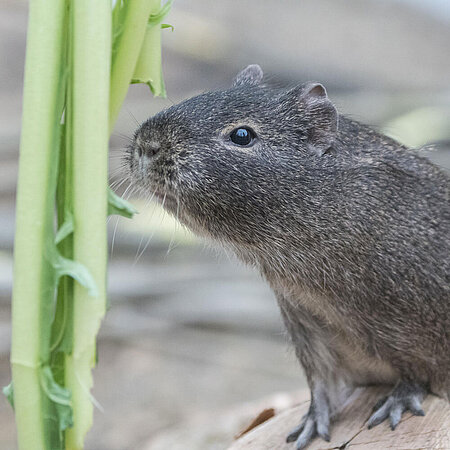Brazilian guinea pig
Cavia aperea

- Family
- Guinea pigs (Caviidae)
- Weight
- 520 – 800 g
- Habitat
- Savannahs, grasslands, plateaus (up to 3,000 m)
Early developers with long life
Brazilian guinea pigs are born with fur and can see immediately after birth. Within a few hours they are able to run. After three days they already begin to eat solid food and by their fi fth day of life the young pups can survive without their mother. They attain sexual maturity between 28 to 35 days. Brazilian guinea pigs kept as pets or in a zoo can live up to the age of 14 years.
Family-oriented rodents
The South American rodents live in small groups consisting of a male and one to two females with their offspring. These small families typically share a home range. Brazilian guinea pigs do not dig burrows in the ground, but instead create a complex system of surface tunnels in the dense vegetation.
Today there are 15 wild guinea pig species. It was long believed they were the ancestors of the domestic guinea pig, but new fi ndings now question this.